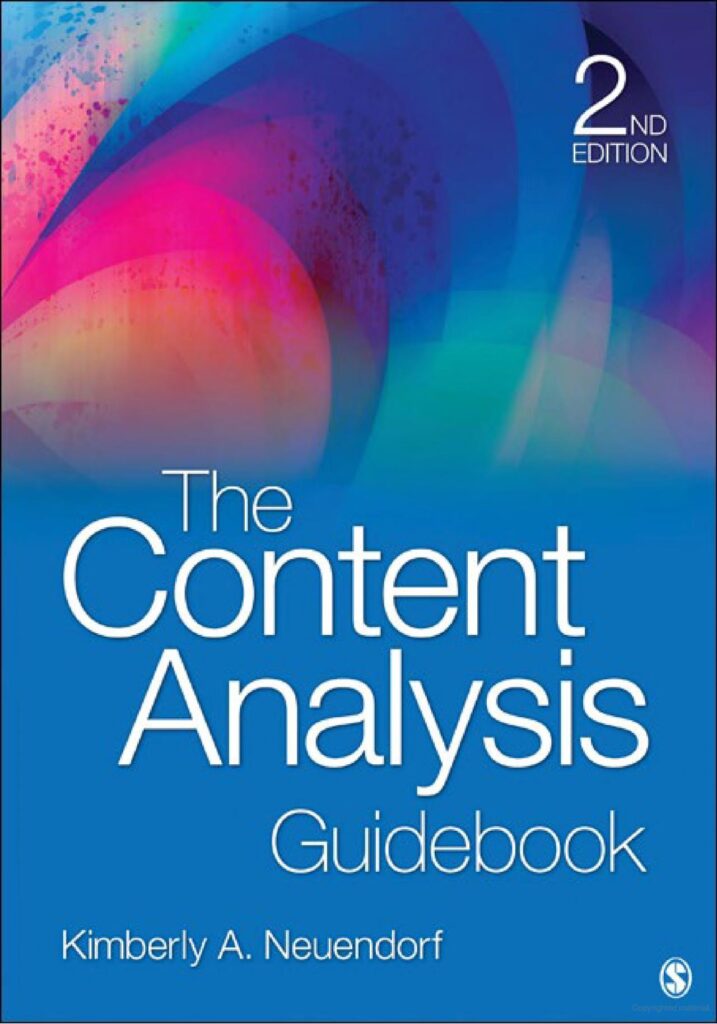Human Coding Sample Materials
Human Coding in Content Analysis
The Content Analysis Guidebook defines Content Analysis as “the systematic, objective, quantitative analysis of message characteristics”. This section of the website focuses on human coding, in which human coders use a codebook to guide the systematic examination of message content. To determine whether human coding or computer coding (CATA) is appropriate for your research, please reference the Flowchart for the Typical Process of Content Analysis Research.
This section is a collection of coding materials (codebooks, coding forms and additional materials) for human coding that have been used in previous content analysis research. These may be used as a guide for future research, however, most researchers will find that it is necessary to tailor every codebook to each specific research study. Where possible, cautions, limitations and discussion of the validity and reliability of the codebook are included.
The Content Analysis Guidebook Online is accepting codebooks from content analysis research. If you would like to submit your coding materials, please email them to contentanalysisguidebook@yahoo.com with reliability statistics or a discussion of reliability.
Codebooks and Coding Forms
- Bauer, Martin, Ragnarsdottir, Asdis, Rudolfsdottir, Annadis, & Durant, John. (1995). Public perceptions of BSE and CJD risk in Europe. From Science and technology in the British press, 1946-1990: A systematic content analysis of the press. Project report.
- Brown, A. (2011, May). Promoting disrespect through children’s television (Unpublished master’s thesis). Cleveland State University, Cleveland OH.
- Budge, Ian, Klingemann, Hans-Dieter, Volkens, Andrea, Bara, J. & Tannenbaum, E. (2001). Manifesto Research Group: Standard coding categories used to code party election programmes.
- Capwell, Amy. (1997). Chick flicks: An analysis of self-disclosure in friendships. Unpublished master’s thesis, Cleveland State University, Cleveland, OH.
- Gifford, B. (2013). Reviewing the critics: examining popular video game reviews through a comparative content analysis (Unpublished master’s thesis). Cleveland State University, Cleveland OH.
- Janstova, P. (2006). Empirical testing of auteur theory via content analysis: The case of Jane Campion (Unpublished master’s thesis). Cleveland State University, Cleveland OH.
- Kalis, Pamela & Neuendorf, Kimberly A. (1989). Aggressive cue prominence and gender participation in MTV. Journalism Quarterly, 66, 148-154, 229.
- Kane, Carolyn M. (2008). See you on Myspace: Self-presentation in a social network website. Unpublished master’s thesis, Cleveland State University, Cleveland, OH.
- Kolt, Jeremy. (1996). Relationship initiation strategies: Interpersonal communication in personal advertisements. Unpublished master’s thesis, Cleveland State University, Cleveland, OH.
- Langdon, E. (2012). Popular music lyrics and adolescent sexual behavior and attitudes (Unpublished master’s thesis). Cleveland State University, Cleveland OH.
- Lombard, Matthew, Snyder-Duch, Jennifer, Bracken, Cheryl Campanella, Ditton, Theresa B., Kaynak, Selcan, Linder-Radosh, Jodi, & Pemrick, Janine. (1999). Structural features of U.S. television: Primary results of a large scale content analysis. Presentation to the Mass Communication Division of the International Communication Association, San Francisco, CA.
- Lunk, B. (2008). Myspace or ourspace: A cross-cultural empirical analysis of myspace comments (Unpublished master’s thesis). Cleveland State University, Cleveland OH.
- Michelson, Jean A. (1996). Visual imagery in medical journal advertising. Unpublished master’s thesis, Cleveland State University, Cleveland, OH.
- Naccarato, J. L., & Neuendorf, K. A. (1998). Content analysis as a predictive methodology: Recall, readership, and evaluations of business-to-business print advertising. Journal of Advertising Research, 38(3), 19-33.
- Neuendorf, Kimberly A. (2000). Demographics analysis coding materials.
- Neuendorf, Kimberly A. & Abelman, Robert. (1987). An interaction analysis of religious television programming. Review of Religious Research, 29(2), 175-198. [Religion in Broadcasting (RIB) interaction analysis coding materials.]
- Neuendorf, K. A., Gore, T. D., Dalessandro, A., Janstova, P., & Snyder-Suhy, S. (2010). Shaken and stirred: A content analysis of women’s portrayals in James Bond films. Sex Roles, 62(11-12), 747-761. https://doi.org/10.1007/s11199-009-9644-2.
- Smith, Ann-Marie. (1999). Girls on film: Analysis of women’s images in contemporary American and “Golden Age” Hollywood films. Unpublished master’s thesis, Cleveland State University, Cleveland, OH.
- Wongthongsri, Patinuch. (1984). A comparative analysis of Thai and U.S. TV commercials. Unpublished master’s thesis, Cleveland State University, Cleveland, OH.
- Wu, M., & Neuendorf, K.A. (2011, November). Content Analysis as a predictive methodology: Online video game auctions on eBay. Paper presented to the Mass Communication Division of the National Communication Association, New Orleans, LA.

